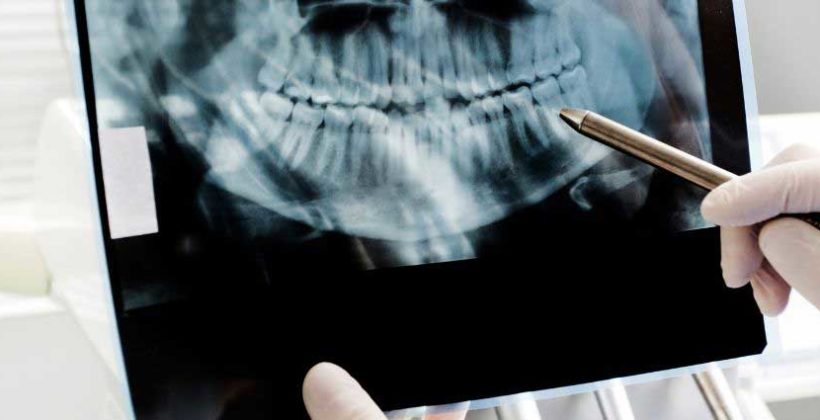
Dental radiographs, also known as x-rays, are typically used to help diagnose damaged and/or carious teeth as well as image pathology that is not visible with the naked eye. Often radiographs help detect fractures or decay far before it even becomes noticeable to patients. At Midland Bay Dental, dental radiography is a standard practise that is performed on patients on a daily basis.
What Are the Different Types of Dental X-Rays?
Now that you know what Radiography is used for, it’s important to understand the different types of x-rays your dentist or dental hygienist may recommend. Generally speaking, there are 4 categories:
- Bitewing Radiography: As the name implies, you need to bite on a special holder for this radiograph to be taken. This is one of the most common x-rays dentists take. They are very helpful to check for cavities in between your teeth and track gum disease. Less commonly, they are needed to see if saving a broken down tooth is even possible.
- Periapical Radiography: To understand this x-ray, think apex. Periapical x-rays provide information about your teeth and the surrounding bones. This image mostly is used to see what is happening at the meeting point of the tooth and the bone. If your teeth are hurting, this x-ray might provide a clue. They are also useful to evaluate and perform root canals on teeth.
- Panoramic Radiography: For this type of dental x-ray, a machine will rotate around your head, allowing your dental professional to check your wisdom teeth, plan for implanted dental devices, or investigate any potential jaw problems. They are also helpful for orthodontists to see how your child’s dentition is developing.
- Occlusal Radiography: This is sometimes known as “sandwich radiography” and is used to examine the upper and lower jaws, as well as the palate and floor of the mouth. It is rarely used since the pathology it is designed to detect is often rare to begin with.
How Often Should You Get X-Rays?
Patients often wonder if dental radiography is really necessary with each visit. The answer depends on a number of factors, including your personal oral health needs. For example, if you’re a healthy adult that does not currently have cavities or other issues (and hasn’t for a few years), you likely won’t need x-rays at every visit. However, if you were recently diagnosed with any oral issues or conditions, your family dentist and dental hygienist will need to monitor the situation to see if it’s progressing, maintaining, or improving.
Keep in mind that regular x-rays are an important part of the process for many reasons. The earlier you catch cavities, for example, the less likely they are to grow or worsen. Same goes for bone loss and gum disease. Any cysts or abnormalities are also best caught before they get out of hand.
Finally, if you’re recently been assessed with a new condition or have undergone any work (including cosmetic dentistry, such as dental veneers), it’s important for your dental team to keep an eye on your oral health, ensuring that you’re recovering smoothly and that no further issues are presenting themselves.
As a patient, you have the right to ask questions; and a professional dental team, such as the staff at Midland Dental, should have all the answers. If an x-ray has been recommended to you, your dentist will help explain why you need dental radiography, then walk you through the process, and help you along each step of the way.
Dental Radiography at Midland Bay Dental
At Midland Bay family dentistry, we are a family-friendly dental office that handles everything from general dentistry, to oral hygiene, through to preventative care. We have some of the best dentists and dental hygienists in Midland on staff, which makes routine procedures such as dental radiography quick and easy for our patients.
If you have any questions, want to learn more, or think you may need dental radiography, please don’t hesitate to contact us!

